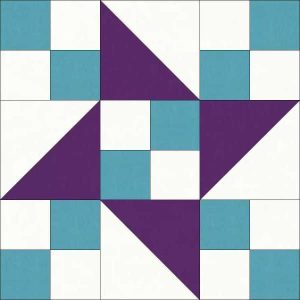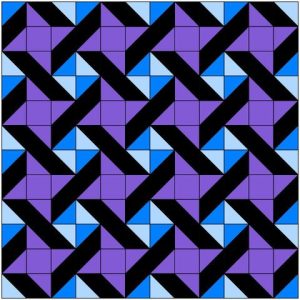Creating a Friendship Quilt is a wonderful way to celebrate relationships while indulging in the art of quilting.
This pattern is perfect for beginners and seasoned quilters alike, offering a versatile and meaningful project. In this tutorial, we’ll walk through the step-by-step process of making a Friendship Quilt, including fabric cuts, measurements, and tips for using essential quilt patterns.
This guide also incorporates effective SEO techniques with keywords such as “quilt” and “quilt patterns” for search optimization.

Choosing Your Fabric and Preparing the Cuts
Choosing the right fabric is the first step in making your Friendship Quilt. A typical Friendship Quilt features a combination of solid and patterned fabrics, each representing friendship and unity. You’ll need to select at least two or more contrasting colors that complement each other.
For this quilt pattern, cut 5-inch squares from your chosen fabrics. You will need approximately 80 squares for a small throw-sized quilt. This size allows you to arrange the pieces in a way that highlights both the fabric’s design and your unique pattern.
Ensure all your cuts are precise by using a rotary cutter, ruler, and cutting mat. Keeping your squares uniform in size will make it easier to sew everything together later. If you’re new to quilting, take your time during this step—it’s essential to get the measurements right.
Assembling the Friendship Blocks
The heart of any Friendship Quilt lies in its blocks, typically constructed from smaller squares, triangles, or strips of fabric. In this case, we’ll be using the basic half-square triangle (HST) quilt pattern, a popular choice for friendship quilts because of its versatility.
To create your HST blocks, take two 5-inch squares of contrasting fabric and place them right sides together. Draw a diagonal line across the square and sew a quarter-inch seam on both sides of the line. Once sewn, cut along the drawn line, and you will have two HST units. Press the seams open.
Repeat this process for all 80 squares. These HST blocks will form the foundation of your quilt pattern. Once all your blocks are complete, arrange them in a layout that appeals to you. The beauty of this quilt lies in its versatility, so feel free to play around with different designs.

Piecing the Quilt Top Together
After laying out your HST blocks in a pattern you love, the next step is to sew the quilt top together. Start by sewing the blocks into rows. Take your time to ensure that each seam lines up correctly, as this will affect the final appearance of your quilt.
When sewing your blocks into rows, use a quarter-inch seam allowance. Press the seams of each row in alternating directions to reduce bulk. This technique will help the blocks nest together neatly when you assemble the quilt.
Once all the rows are sewn, it’s time to sew the rows together. Be patient during this step, as matching the seams between rows is crucial for a clean and professional look. Once the quilt top is complete, press it thoroughly to ensure a flat, smooth surface.

Adding Borders and Sashing (Optional)
Borders and sashing are optional but can add a polished touch to your Friendship Quilt. Sashing is the fabric that separates the blocks, giving the quilt a more defined structure. Typically, 2-inch wide strips work well for sashing.
To add sashing, cut enough 2-inch wide strips to sew between each block and row of your quilt top. Attach the strips between the blocks horizontally first, then sew sashing strips between each row vertically. This will create a grid-like effect, highlighting each friendship block.
For borders, cut fabric strips that are at least 3-4 inches wide. Sew these strips to the edges of the quilt top, adding a frame to your design. Borders help to stabilize the quilt and give it a more finished appearance.
Preparing the Quilt Sandwich
Now that your quilt top is complete, it’s time to create the quilt sandwich, which includes the quilt top, batting, and backing fabric. The batting provides warmth and texture, while the backing fabric holds everything together.
Lay out your backing fabric on a flat surface, right side down. Place the batting on top of the backing, followed by your quilt top, right side up. Smooth out any wrinkles, and ensure all layers are aligned. Use safety pins or basting spray to hold the layers in place while you quilt.
Make sure your backing fabric and batting are slightly larger than your quilt top to allow for shifting during quilting. Trim any excess fabric after the quilting is complete.

Quilting the Layers Together
Once your quilt sandwich is secure, it’s time to quilt the layers together. There are various quilting patterns you can use, depending on the look you want to achieve. Some common options include straight-line quilting, free-motion quilting, or echo quilting.
If you’re a beginner, straight-line quilting is a great option. Start in the middle of the quilt and work your way outward, sewing parallel lines with your walking foot. For a more intricate design, consider using free-motion quilting, which allows you to sew curves, loops, or other patterns.
Take your time during this step. The quilting stitches not only hold the layers together but also add texture and visual interest to the quilt. Once you’ve finished quilting, trim any excess batting and backing fabric from the edges.
Binding the Quilt
The final step in making your Friendship Quilt is binding. Binding encloses the raw edges of the quilt and gives it a clean, professional finish. For this quilt, cut 2.5-inch wide strips of fabric for the binding.
Sew the strips together to create one long continuous strip. Fold the strip in half lengthwise with wrong sides together and press. Starting at one edge of the quilt, sew the binding to the front of the quilt with a quarter-inch seam allowance, leaving a few inches unsewn at the start.
Once the binding is sewn to the front, fold it over to the back of the quilt and hand-stitch it down. This step can be time-consuming, but it gives the quilt a polished look. Ensure that the corners are mitered neatly for a smooth finish.

Finishing Touches and Caring for Your Quilt
With the binding complete, your Friendship Quilt is finished! Give the entire quilt one final press to smooth out any wrinkles and ensure that everything lies flat. Take a moment to admire your work—it’s not just a quilt; it’s a celebration of friendship and creativity.
Join our VIP list and receive exclusive free patterns. You’ll have daily access to the best designs, delivered straight to your device. Don’t miss this chance to get inspired and improve your projects with new and amazing patterns!
When caring for your quilt, gentle washing is recommended. Use cold water and mild detergent to preserve the fabric’s vibrancy. Avoid using harsh chemicals, as they can cause fading. Store your quilt in a dry place, away from direct sunlight, to keep it looking fresh for years to come.
Your Friendship Quilt is now ready to be gifted or enjoyed at home. This quilt pattern serves as a reminder of the love and care that went into each stitch, making it a treasured keepsake for years to come.
This Friendship Quilt tutorial has shown you how to create a beautiful and meaningful quilt using simple quilt patterns. With careful fabric selection, precise cutting, and thoughtful stitching, you’ve crafted a quilt that symbolizes friendship and warmth.





